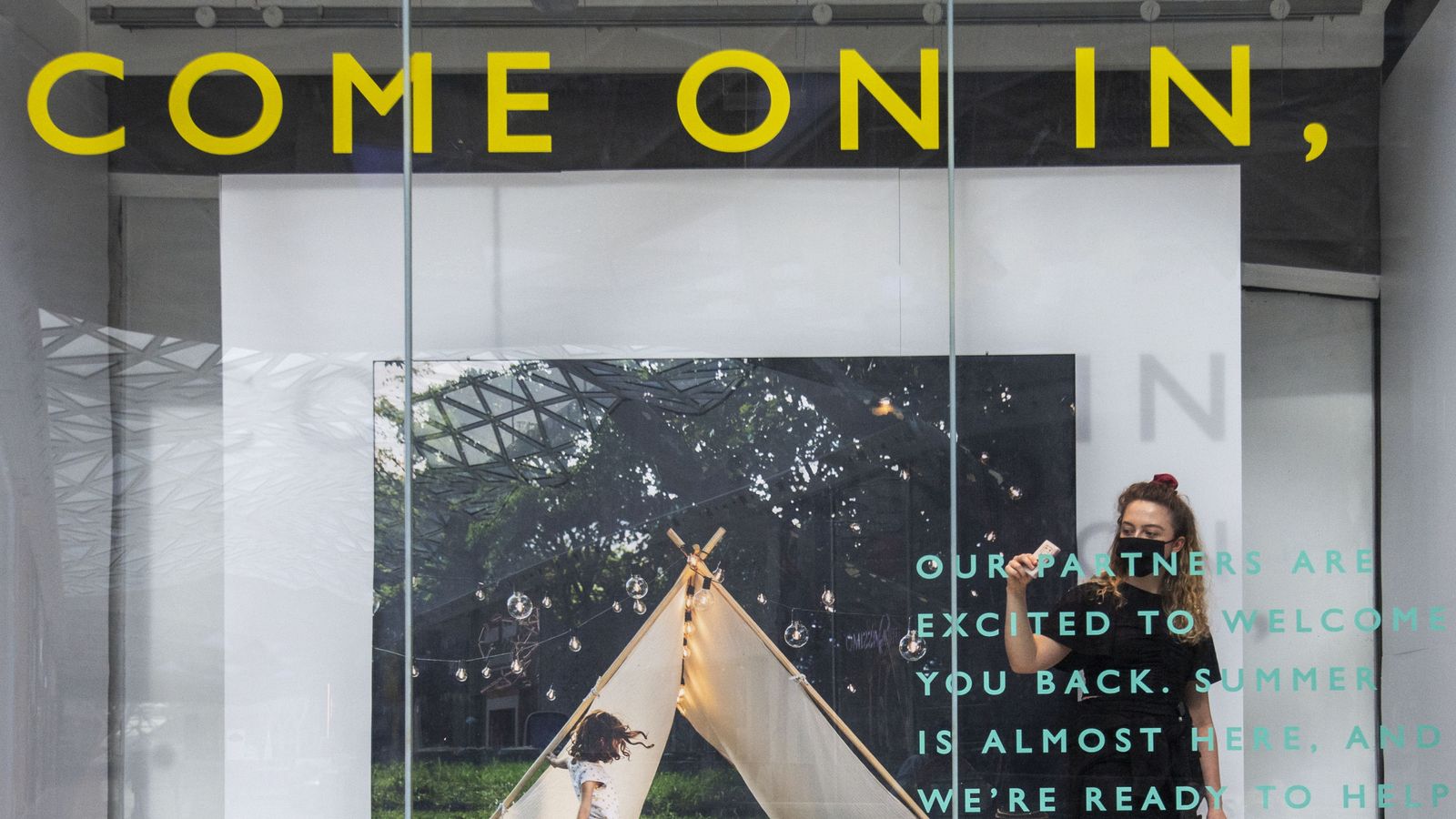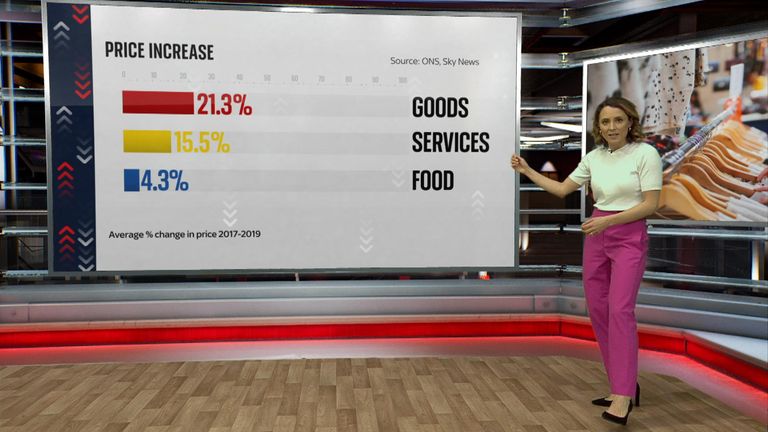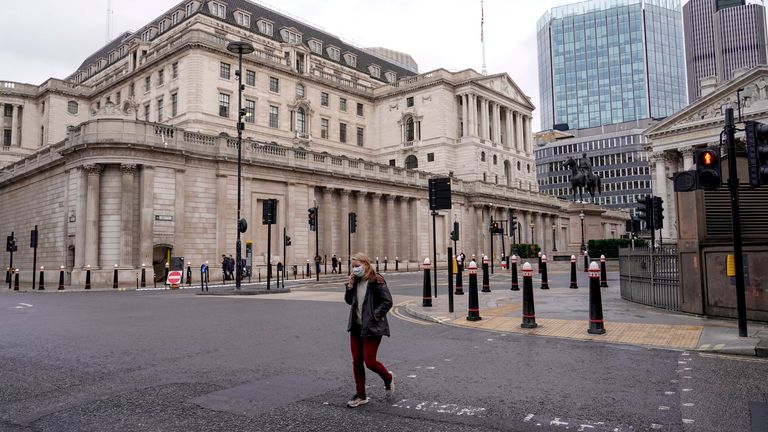Retail sales plunged by 1.4% last month – far more than expected – as consumers tightened their belts in the face of the squeeze in living costs, according to official figures.
The Office for National Statistics (ONS) said the decline was largely driven by a drop in demand for online purchases and pointed to dented demand generally amid soaring inflation.
There was little sign for optimism among retailers except for the owners of DIY shops, though the data did suggest that COVID-weary consumers shifted discretionary spending towards hospitality and attractions instead as the weather improved.
Economists had expected a 0.3% decline in sales month-on-month while the ONS also downwardly revised February’s fall in retail sales.
The figures were released as a closely-watched measure of consumer confidence, covering April, delivered its second-lowest reading since records began nearly 50 years ago.
ONS Director of Economic Statistics Darren Morgan said of the retails sales data: “Retail sales fell back notably in March with rises in the cost of living hitting consumers’ spending.
“Online sales were hit particularly hard due to lower levels of discretionary spending.
“Fuel sales also fell substantially, with evidence suggesting some people reduced non-essential journeys, following record high petrol prices, while food sales continued to fall, dropping for the fifth consecutive month.”
It all makes for worrying reading at the Bank of England.
The GfK index, derived from a survey, came in at -38 – worse than economists had expected and just shy of the all-time low seen in 2008 as the global financial crisis was gathering pace.
The responses were registered at a time when we learned that inflation had hit a 30-year high of 7%.
It is forecast by the Office for Budget Responsibility to climb above 9% after the unprecedented surge in the energy price cap in April – and rises in other household bills such as mobile, water and broadband are reflected in the calculations.
The price cap is currently expected to rise further – by up to £500 – in October when the effects of Russia’s invasion of Ukraine are included while the retail sector expects price rises to intensify throughout 2022.
GfK reported a sharp decrease in consumers’ intentions to make major purchases.
All the data will be taken into account by rate-setters at the Bank, who have signalled more caution on rising rates ahead after lifting Bank rate to 0.75% at their last meeting.
They will be anxious not to choke off economic growth through rising interest rates, which are intended to stop rising inflation expectations, such as wage hikes, rather than rising prices as the inflation has been caused by factors outside their control including energy and food costs.
Inflation, while not demand-led, is nevertheless proving more sticky and persistent than policymakers had expected and financial markets still forecast a 0.25% rate hike at the next meeting of the monetary policy committee in two weeks’ time.
That is because the inflationary fires have been stoked by Russia’s war against Ukraine.
However, Bank governor Andrew Bailey admitted on Thursday that policymakers were walking a tight line between tackling inflation and avoiding recession.
Joe Staton, client strategy director at GfK, said of its survey findings: “This is dire news for consumer confidence and with little prospect of any economic relief on the horizon we can only forecast further falls in the index for the year ahead.”



